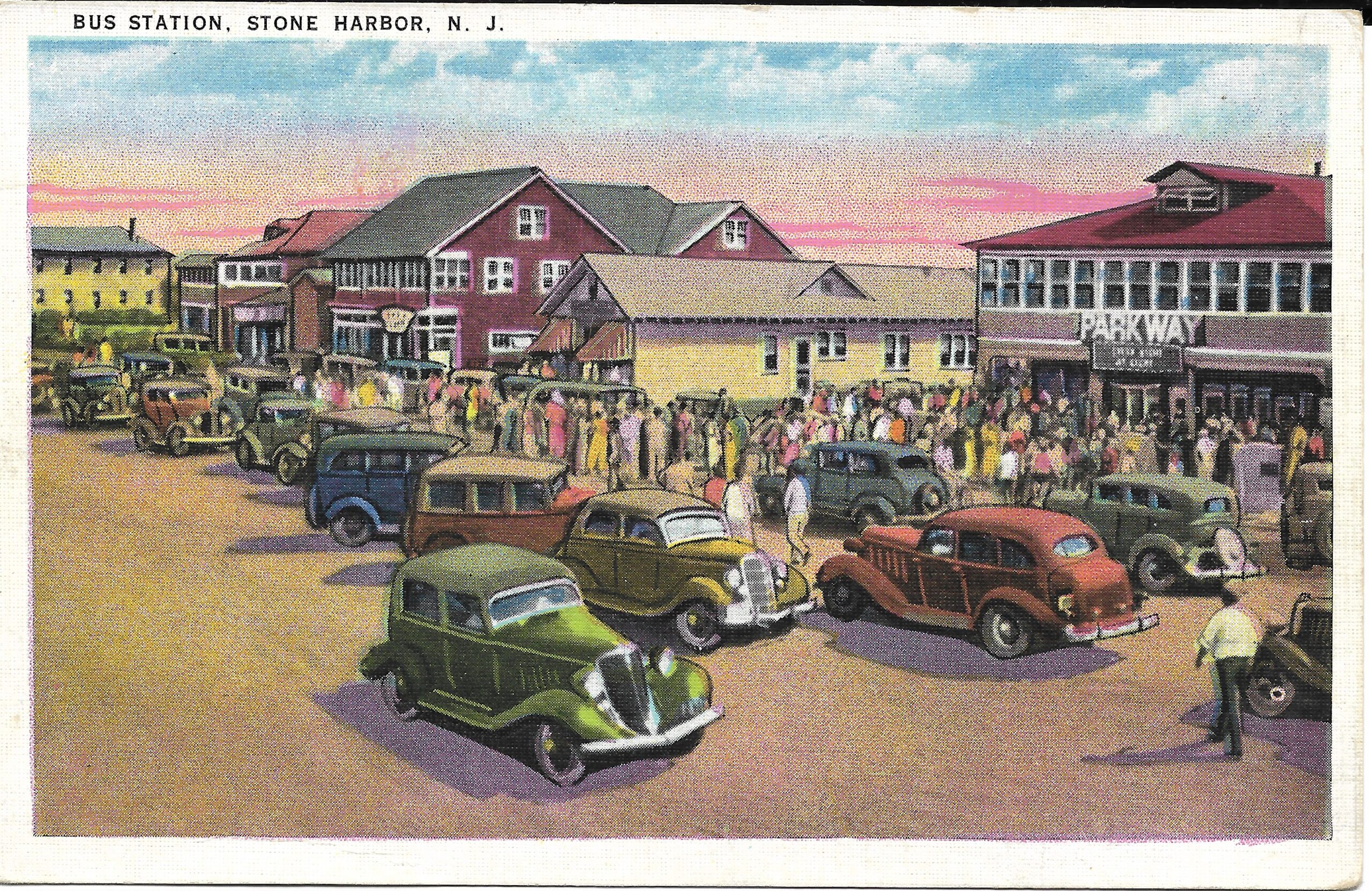
Introduction: Here 8 Stone Harbor vintage picture post cards will be utilized to illustrate and support the historical basis for this narrative about two movie theaters rooted in Stone Harbor history.
The very first movie house in Stone Harbor built in 1922 was originally called the Parkway Theatre on 96th Street and which later was renamed and called the Park. Movie theaters like the Parkway became very popular and provided a means of good family entertainment. Remember that movies back then were silent – no talkies yet – and were usually accompanied by an organist who played live music to suit the action on the screen. In the very early years through most of the decade of the 1920s, written accounts have indicated that some accomplished organists from Camden and Philadelphia were hired and employed by the Parkway management to play the organ live as accompaniment to all movie showings during the summer months. One such organist in 1927 was John S. Thompson who also was the organist at the well known Stanley Theatre in Camden.
Theater-goers at that time had limited choice with only a single screen showing the featured film and the seating capacity at the Parkway Theatre was 460 freestanding seats or what were advertised as comfortable chairs. Before movie theaters had air conditioning, it wasn’t uncommon to see audiences using hand fans (Does anyone remember them?) to try to keep them cool in the packed theaters. The advertising brochures known as “handbills” were available for free and distributed throughout Stone Harbor on a weekly basis and featured the very latest and best in “photoplays” as the movies in the 1920s were often called. In the summer months there were two shows daily at 7:15 and 9 P.M with a different show being featured each night. The cost for admission was 30-cents for adults and 15-cents for children.
This 1930s era picture post card provided by Stone Harbor variety store merchant David Troxel shows shoppers and “day-trippers” converge at the bus station for a trip home and moviegoers wait to see the current smash hit movie at the Parkway Theatre situated on the right side of this image. Three movies that were actually shown there included “LOVE” starring John Gilbert and Greta Garbo and “THE BIG CITY” featuring the illustrious Lon Chaney. “LOVE” was a 1927 American silent era steamy romance drama most popular at that time. “THE BIG CITY” was an American silent crime film that also was very popular at that time. Another great film that was a favorite at the Parkway that summer was “BRINGING UP FATHER” starring Marie Dressler, Polly Moran and J. Farrell MacDonald. In addition to each feature film, there were short vignettes of human interest shown along with some of the latest News.
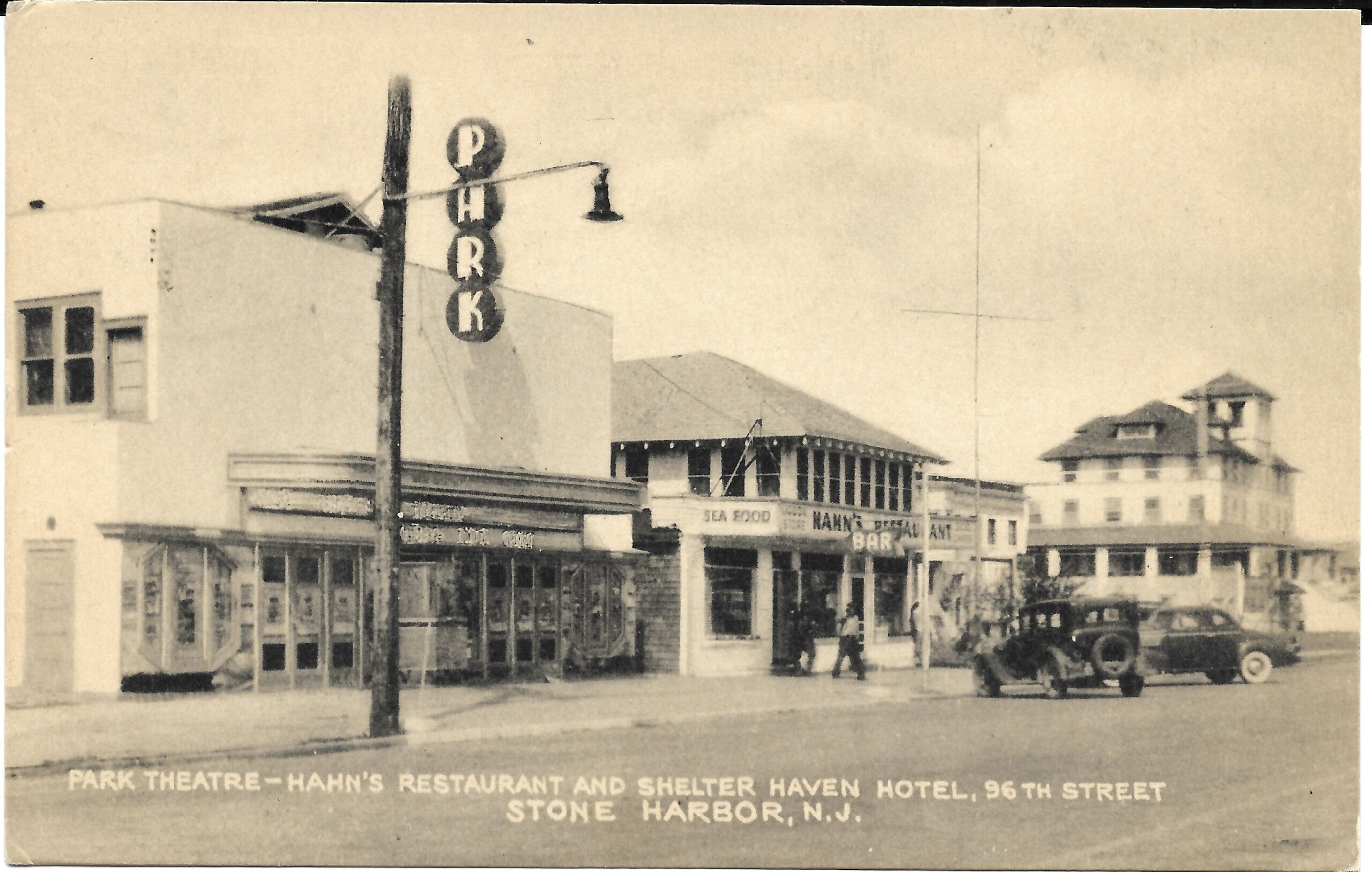
Before proceeding, compare the first image showing the front of the former Parkview Theatre with the second image showing the substantive changes brought about by the newly renovated Park Theatre.
In May of 1936, the Park Theatre underwent extensive remodeling both inside and out with numerous improvements throughout. The official re-opening was scheduled for the new summer season on May 29.
It was reported that Jack Greenberg, the owner of the so-called playhouse, had “spared no expense to transform the Park into a thing of beauty and to make it the finest equipped and most comfortable of theaters”. We understand the front of the building and the marquis were entirely new featuring neon trimming and a sizable neon electric sign. The lobby was all new with new frames and mirrors. The box office was even constructed of “golden agate glass and blue glass trimming, with stainless steel”.
Continuing with the modernization of the Park Theatre, the seats were far more spacious and luxurious and they were finished in “chartreuse green mohair and eggshell leather” and the floor was newly covered with luxurious carpets. We also understand the interior walls of the theatre had been treated with a thick velour that was a fabric with a pile or napped surface resembling velvet used in upholstery and curtains. There were large, lovely chandeliers hanging from the newly decorated ceiling. In the back of the theatre it was finished with marble throughout. Even modern drinking fountains were provided and the theatre’s cooling system had been also improved. In addition, the latest model of projection equipment was procured and installed along with a new and larger screen. Interestingly, it should also be noted that the floor was even sloped so that an unobstructed view of the screen may be had from every seat in the house. Now you can understand that this project was a significant undertaking.
The latest and best offerings of feature films were to be shown at the Park. In fact, when the newly renovated theatre was officially re-opened, the opening attraction scheduled was “SMALL TOWN GIRL,” (Musical/Romance) with Janet Gaynor and Robert Taylor. For the record, Gaynor and Taylor would go on to become some of the best box office draws of the era. On the following day, the much talked about picture show was “THESE THREE” (Drama/Romance) in which Miriam Hopkins, Merle Oberon, Joel McCrea and Catherine Doucet starred. After that inaugural weekend, the regular schedule for the Park Theatre was Monday, Wednesday, Friday and Saturday.
This second post card presented earlier depicts a ground level view of the newly renovated Park Theatre which as you can see is next door to Hahn’s Sea Food Restaurant and Bar. The owner of this popular restaurant was Martin Hahn and he was known to have boasted that he not only had the longest bar in all of South Jersey but the best crab cakes as well. Perhaps some old-timers reading this account might just recollect and attest to how delicious those crab cakes really were. Pictured on the far right side of this image is the iconic 31 year old Shelter Haven Hotel at the corner of Third Avenue and 96th Street. Incidentally, this post card was mailed from Stone Harbor and bears a postmark dated AUG 31, 1943. The sender of this particular card writes in part to family at home in Moylan, Pa. that he “went to the movies last night & again tonight.” In 1943 there was still only one movie house in Stone Harbor and that was the Park Theatre. However, the Park would be demolished in 1988.
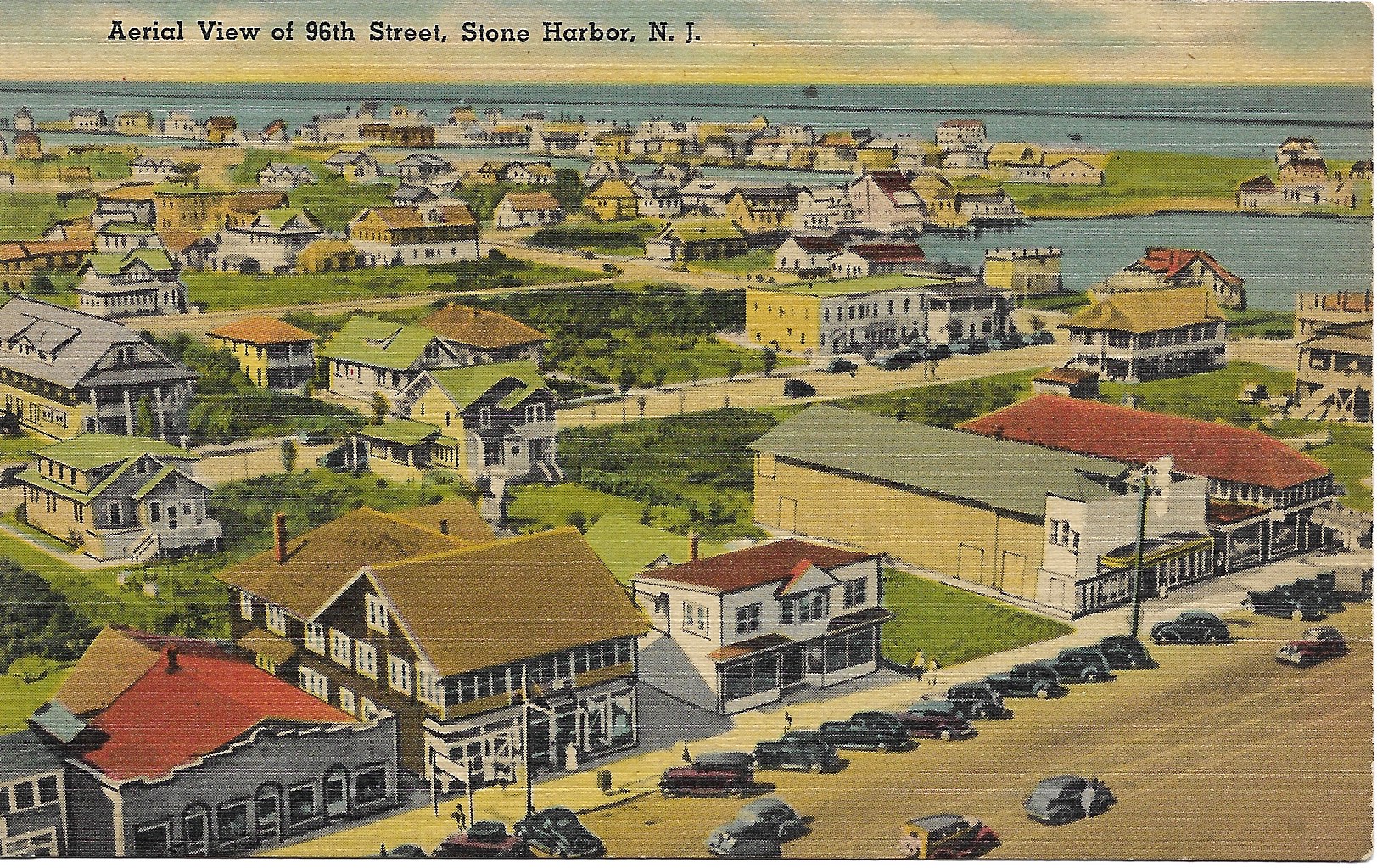
The third image is an undated linen post card published in color and sold by David Troxel. This interesting aerial view of 96th Street taken from atop the water tower across the street includes not only the Park Theatre on the right but the Shelter Haven Basin in the upper right and the Great Channel in the far distant background. A glance at this image also reveals that there were still some undeveloped lots of land or green spaces evident even in and around the downtown business district.
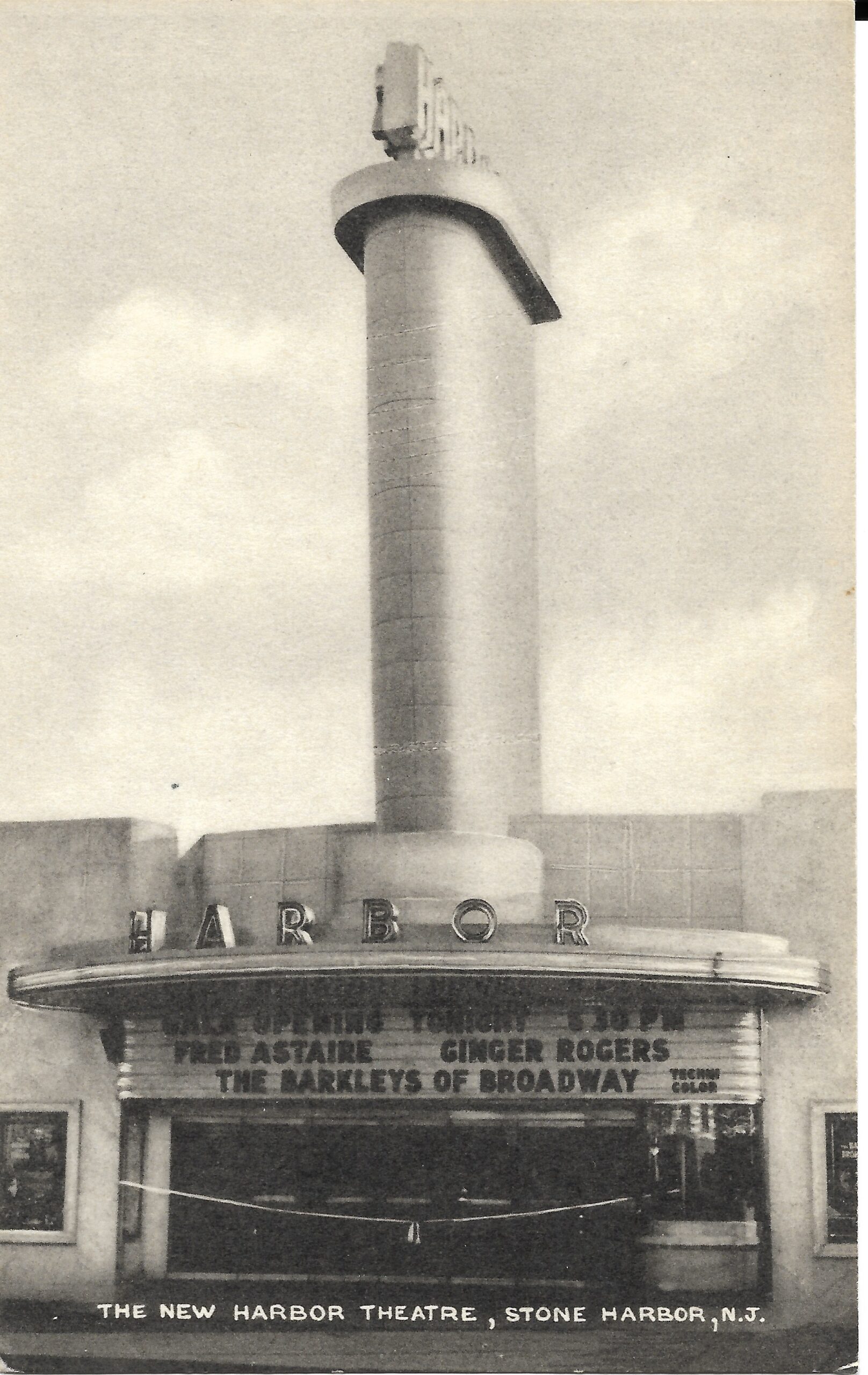
This vertically formatted black and white post card shows the “New Harbor Theatre” which was built in 1949 and opened in 1950. This new movie house became the second establishment to show feature length movies in Stone Harbor and they even offered plush seats for greater comfort along with an usher with flashlight who would show moviegoers to their seats. The marquee at the time this photo was taken shows us the featured 1949 musical/comedy movie was “THE BARKLEYS OF BROADWAY” and starring none other than the ever-popular duo of Fred Astaire and Ginger Rogers. Apparently this photo was taken specifically at the time for the official opening of the New Harbor Theatre as the marquee signage also states “GALA OPENING TONIGHT – 5:30 PM – TECHNICOLOR.” Please note that there is a ceremonial cord draped across the entrance doors in anticipation of the premier opening event.
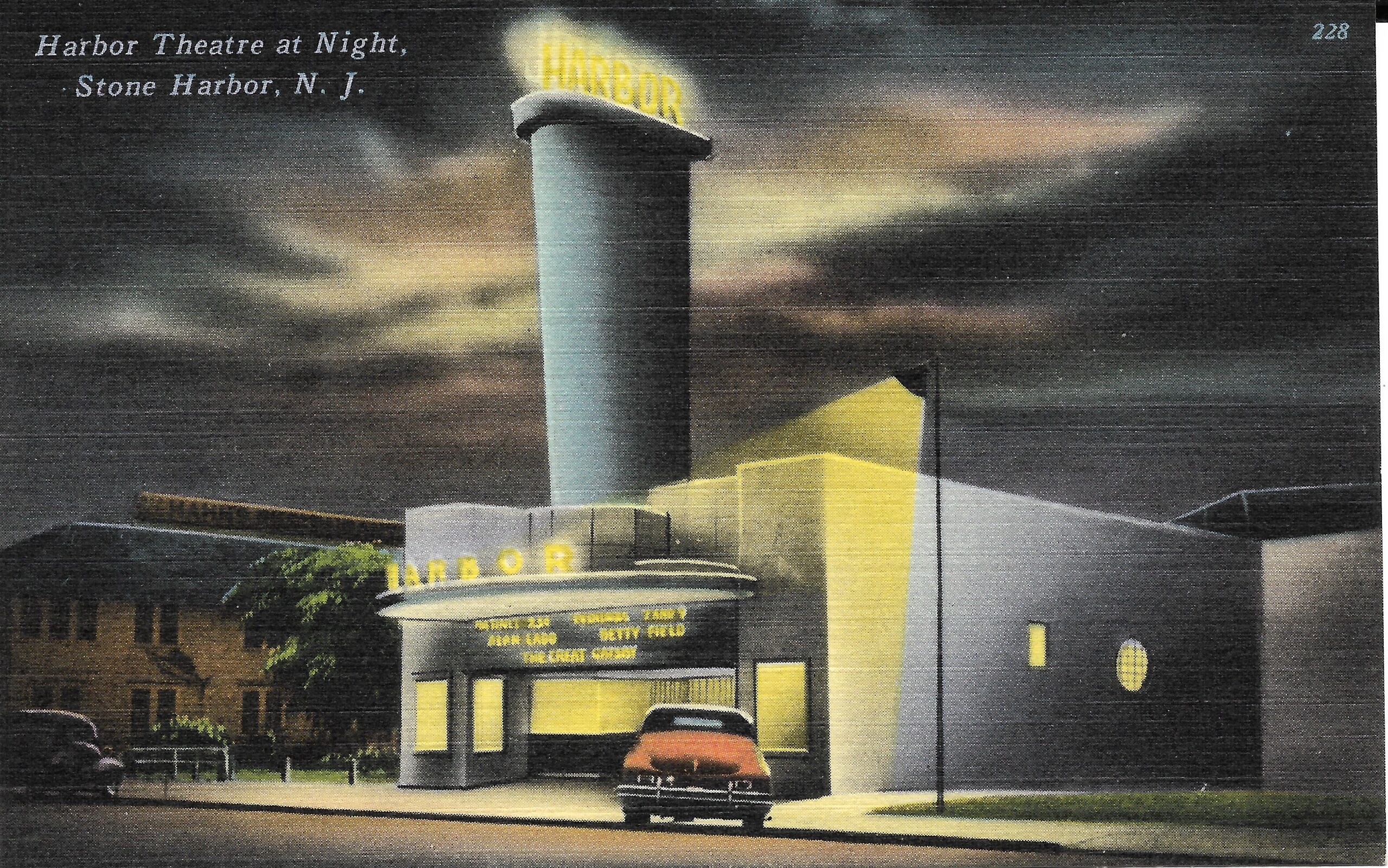
This next image is a linen post card depicting the “Harbor Theatre at Night”. A real classic movie is showing this night – “THE GREAT GATSBY” and starring Alan Ladd and Betty Field. This featured movie was the 91-minute long 1949 version which was the first big adaptation. There have been 4 adaptations made of THE GREAT GATSBY and the original film was made in 1926 as a silent movie just one year after F. Scott Fitzgerald’s novel came out. As for the new building itself, this strikingly distinctive, quite bold, and very modern style of Art Deco architecture including a tower employed bold outlines, geometric and even zigzag forms as well as new building materials such as plastic.
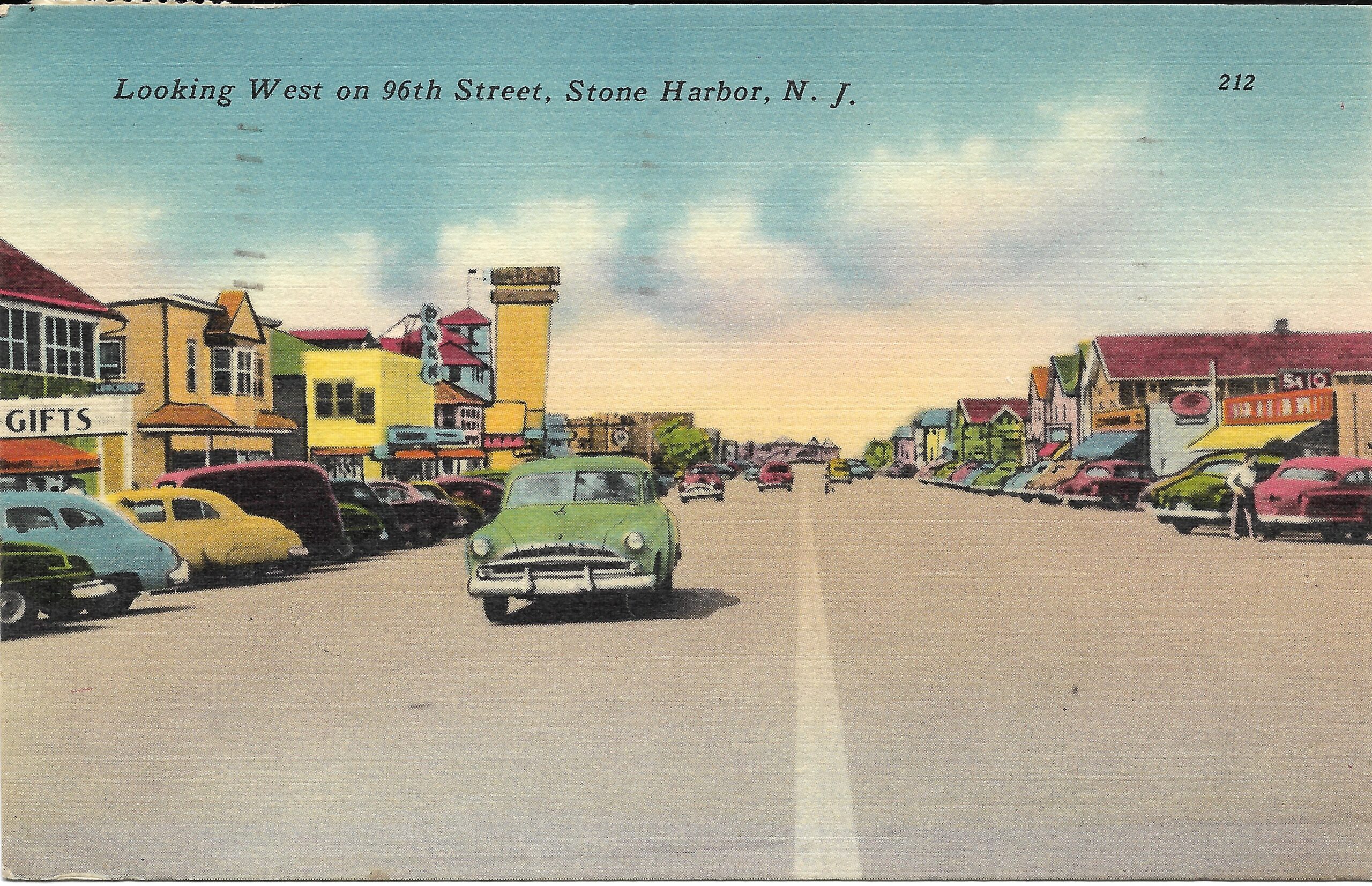
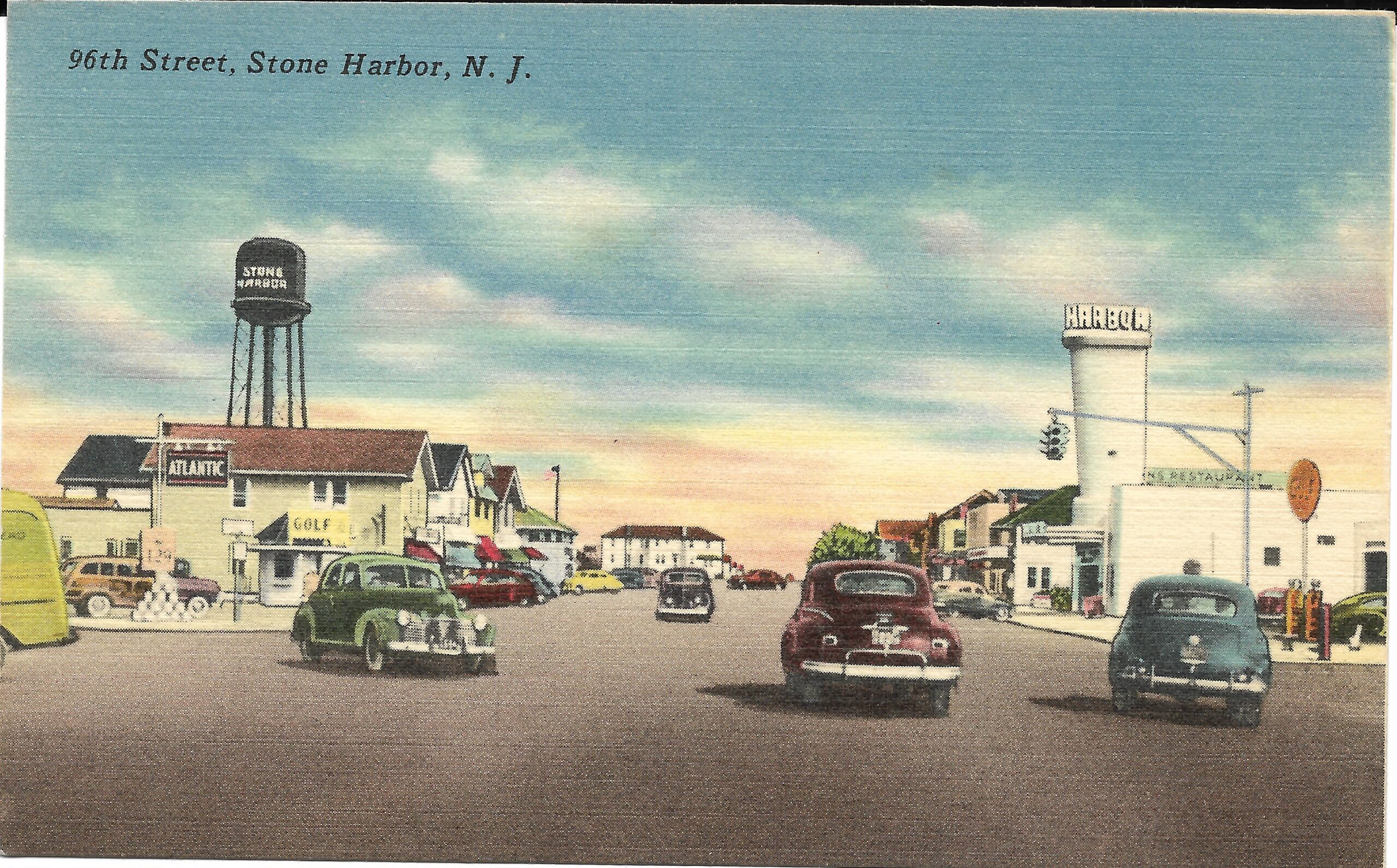
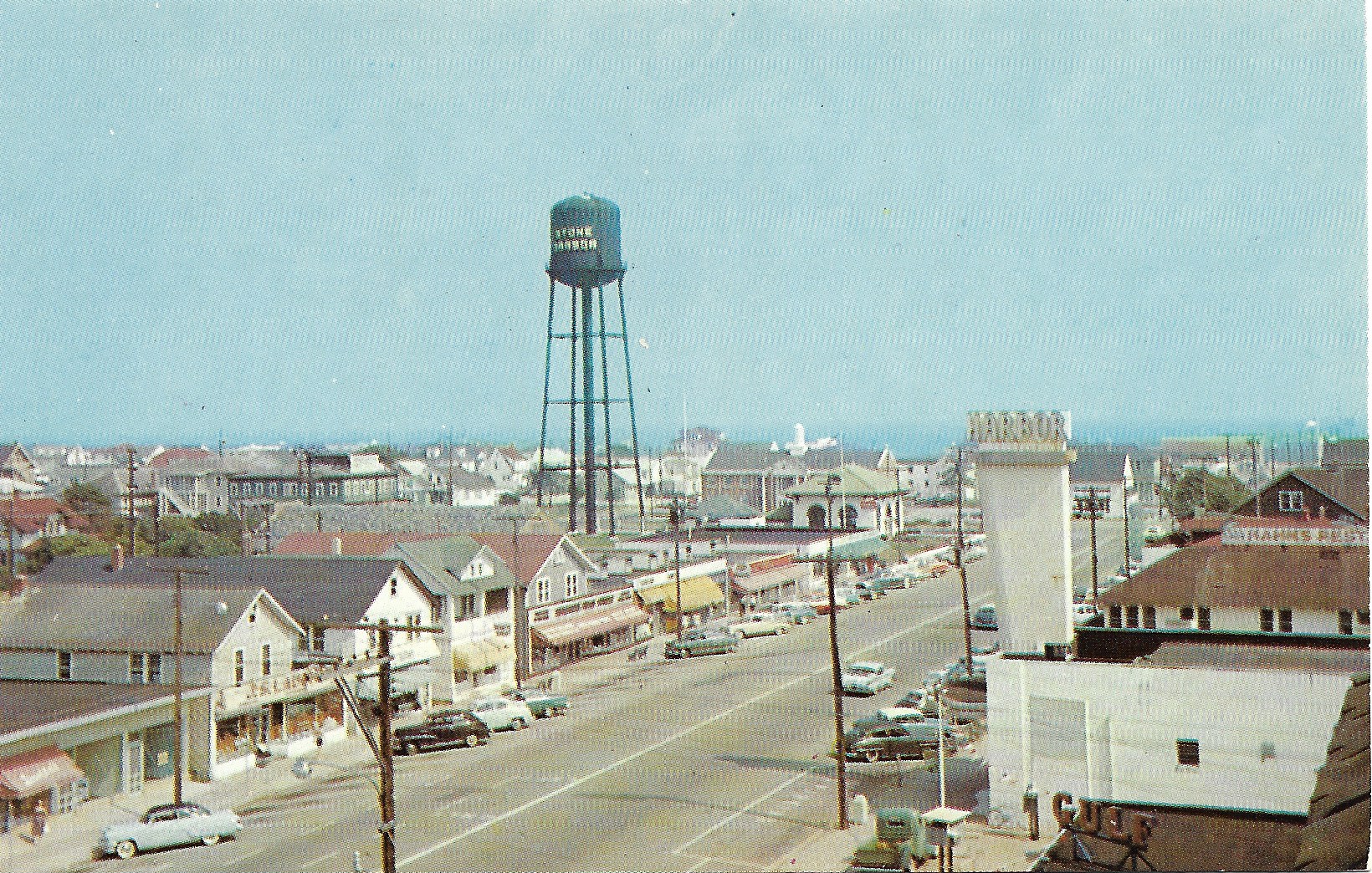
This final trio of post cards offer some more views of downtown showing the movie theaters. The first in this group was mailed from Stone Harbor on JUL 15, 1958. The most conspicuous building facade along 96th Street was the special architectural treatment rendered to the Harbor Theatre which certainly stands out and is most easily identifiable in all three images. In fact the word “HARBOR” conspicuously appears featured atop the elevated or towering part of the building. Each of the letters H-A-R-B-O-R were quite large and were even illuminated at nighttime in bright neon and could easily be seen from some distance. During the early years the Harbor had 2 evening shows daily at 7 and 9 PM. It is also my understanding that the Harbor Theatre is currently open for business all year round. Presently the Harbor is the only movie theater in Stone Harbor and has in recent years become a movie theater complex (often called a multiplex) with multiple screens within a single building. In the summer months when rainy days occurred, business was often particularly brisk when daytime matinee features were added to attract families and especially children to attend. Perhaps some might even remember that the Harbor billed itself as “The Theatre At Its Best.”
You should also be able to easily discern the Park Theatre in at least one of these last three scenes. In all likelihood the chrome view that presents an aerial perspective was taken circa mid- to late 1950s from one of the upper floors of the Shelter Haven Hotel at the corner of Third Avenue and looking eastward toward the ocean.
Conclusion: In the 1920s and 1930s, Americans could escape from their problems and lose themselves in another era or world. People of all ages attended the movies with far more regularity than today, often going more than once a week. Competition brought prices down and there were even double-features which became very popular. The rise of the “talkies” actually occurred in the late 1920s onward. The most popular genres in the 1920s were melodrama, western historic epic, romantic comedy along with slapstick, science fiction and even fantasy. So it should not be surprising to know that movie going attendance in the decade of the 1920s really soared and so did the number of movie houses in America.
Finally, keep in mind that in the 1920s people basically entertained themselves with spectator sports events like baseball games, card games like bridge and rummy, board games like checkers, chess and the Ouija board, the ever-present radio and then the movies. Only about a third of all U. S. households in the year 1920 even had telephone service. Hopefully these closing remarks will put things into better perspective.
